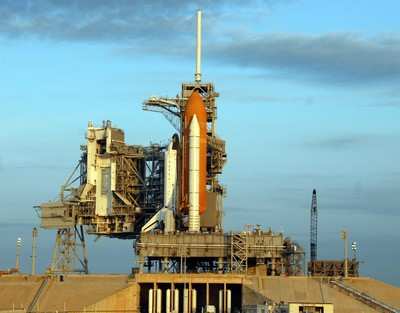Thu, Apr 28, 2011
Full HD Images Will Improve Medical Documentation, Facilitate
Station Operation And Maintenance
The U.S. space shuttle Endeavour, scheduled for launch on April
29 will transport a new HD video camera to the International Space
Station (ISS). The first full HD video camera, designed and built
by Astrium for the ISS on behalf of ESA, was delivered in eight
months. At the end of 2010, a fully qualified and tested prototype
of the High Definition Video Camera Assembly (HD-VCA), including
the interface unit, was delivered by ESA/Astrium to NASA for upload
with this so called mission ULF-6 56 (Utilization and Logistics
Flight). The camera has a design life of ten years and is intended
to replace one of the existing system cameras on board the Columbus
module.

There are a multitude of possible uses for high-quality moving
images from on board the ISS that remain crisp and sharp even on
large displays or projection screens. They can provide doctors with
high-resolution documentation for detailed case histories or can
serve as a precision tool for specialists who need to analyse
in-orbit hardware and processes when providing technical ground
support. Moreover it gives the general public on Earth genuine
insights into events in orbit. The product also has potential for
commercial exploitation: the HD camera could in future be set up to
film through a window while the astronauts are asleep, enabling it
to transmit live images of Earth back to the ground station.
To achieve the very short time to orbit for the HD-VCA project,
Astrium processed multiple aspects of each phase in parallel, from
development through to testing, qualification, and the work on
prototype devices. Close cooperation was maintained with ESA
throughout. The specifications for the HD video camera for the ISS
included employing as many off-the-shelf components as possible,
while at the same time limiting or preferably avoiding the risks
associated with the use of such components in space. Astrium's
solution was the HD-VCA Box which fits underneath the actual HD
camcorder. It serves as an interface enabling the HD camera to
operate on power supplied by the Columbus laboratory's on-board
network, and also converts the data recorded by the HD camera into
a format that the systems on-board Columbus can read, process and
downlink.
More News
Also: B-29 Superfortress Reunion, FAA Wants Controllers, Spirit Airlines Pulls Back, Gogo Galileo Van's Aircraft posted a short video recapping the goings-on around their reorganiz>[...]
Light Gun A handheld directional light signaling device which emits a brilliant narrow beam of white, green, or red light as selected by the tower controller. The color and type of>[...]
"The journey to this achievement started nearly a decade ago when a freshly commissioned Gentry, driven by a fascination with new technologies and a desire to contribute significan>[...]
"Our driven and innovative team of military and civilian Airmen delivers combat power daily, ensuring our nation is ready today and tomorrow." Source: General Duke Richardson, AFMC>[...]
Aircraft Conflict Predicted conflict, within EDST of two aircraft, or between aircraft and airspace. A Red alert is used for conflicts when the predicted minimum separation is 5 na>[...]
 Airborne 04.16.24: RV Update, Affordable Flying Expo, Diamond Lil
Airborne 04.16.24: RV Update, Affordable Flying Expo, Diamond Lil ANN's Daily Aero-Term (04.20.24): Light Gun
ANN's Daily Aero-Term (04.20.24): Light Gun Aero-News: Quote of the Day (04.20.24)
Aero-News: Quote of the Day (04.20.24) Aero-News: Quote of the Day (04.21.24)
Aero-News: Quote of the Day (04.21.24) ANN's Daily Aero-Term (04.21.24): Aircraft Conflict
ANN's Daily Aero-Term (04.21.24): Aircraft Conflict



